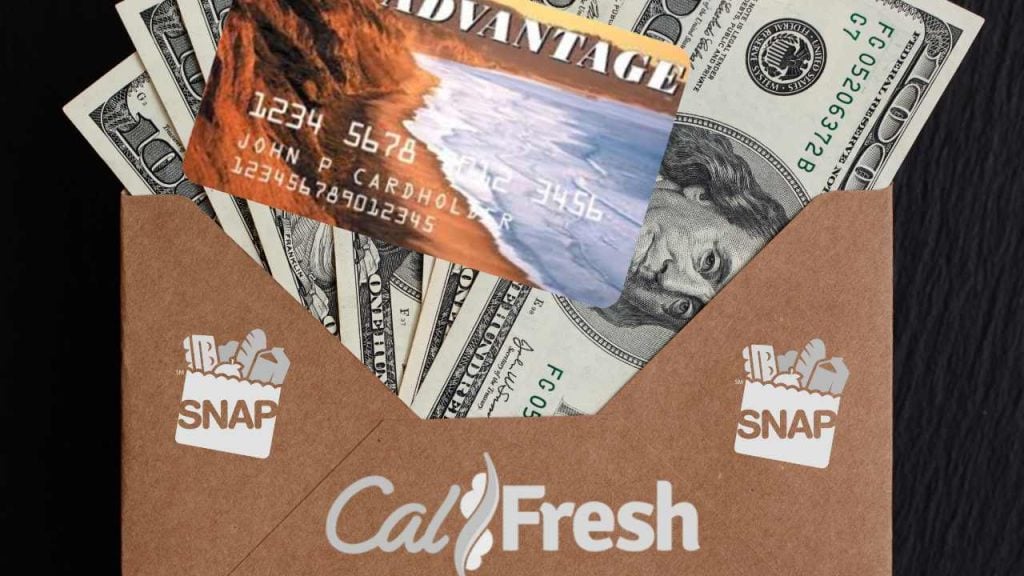In California, where the cost of living continues to rise (in fact, this is the reality across the United States), programs like CalFresh (or SNAP benefits) save thousands of families. Better known at the federal level as SNAP, this state initiative has a clear mission: to combat food insecurity and ensure that no one goes without access to basic nutrition.
The CalFresh initiative provides monthly benefits that stretch the family budget where it hurts most: the grocery store. Aid reaches beneficiaries directly through an Electronic Benefit Transfer (EBT) card. This card, which operates like a regular debit card, can be used at the vast majority of supermarkets and many farmers markets.
For seniors, people with disabilities, or people experiencing homelessness, the innovative Restaurant Meals Program (available in select areas) offers even more flexibility, allowing them to use EBT at participating establishments.
CalFresh Payments in 2025: July Dates and Amounts
The monthly amount is not fixed; it is carefully calculated based on your specific circumstances. Key factors include the number of people in your household, your accountable income (gross and net), and fixed expenses such as housing or utilities. The idea is to supplement your resources, not replace them. To give you an idea, the maximum amounts for 2025:
(Effective from October 1, 2024, through September 30, 2025, in the 48 contiguous states and Washington, D.C.)
- 1 person: $292
- 2 people: $536
- 3 people: $768
- 4 people: $975
- 5 people: $1,158
- 6 people: $1,390
- 7 people: $1,536
- 8 people: $1,756
- Each additional person: $220 extra
Eligibility revolves around three pillars: residing in California, having qualifying immigration status (citizenship or certain legal categories), and meeting strict income limits. Your gross income must be below 200% of the federal poverty level, and your net income (after deductions) must be below 100%. For example, a family of three could earn no more than $4,304 gross or $2,152 net monthly.
Applying for CalFresh benefits is easier than you thought, with no endless paperwork or incomprehensible red tape. Everything is designed so that most people can understand how to access this right.
- Online: The fastest way is through trusted portals like GetCalFresh.org or BenefitsCal.com.
- By phone or in person: Contact your county social services office directly. They are the local representatives and will guide you. Call 1-877-847-3663 for instructions on how to apply in your county and schedule an interview.
- Local centers: Visit a social services center in your community for personalized attention.
The trick to doubling your fresh produce purchases that many people don’t know about
Here comes a little-known gem that multiplies the impact of CalFresh. That’s the Double Up Food Bucks, an incentive program specifically designed to help EBT recipients purchase more fruits and vegetables.fresh and Californianto your table. The mechanics are brilliantly simple and straightforward:
- Shop with EBT: Use your CalFresh card to purchase eligible produce (fresh fruits and vegetables grown in CA) at participating stores or markets.
- Receive instant credit: You automatically receive additional creditequal to the value you spenton those fresh produce items. If you spend $10 on local strawberries, you get an extra $10 to use on your next fruit/vegetable purchase! In stores, this credit usually comes in the form of a printed coupon. At farmers’ markets, it often translates into additional “Match Tokens.”
Where can you find it and what are the limits?
The program has taken root in several counties, including Alameda, Santa Clara, Monterey (Salinas, Greenfield, King City), and Mendocino, among others. You can find it in certain independent supermarkets (such as Arteaga’s and Harvest Market) as well as in numerous farmers markets that participate in Market Match. Daily limits vary:
- Stores: Typically $10 per day in Alameda and Santa Clara.
- Farmers Markets (especially rural): They can double up to $15 or even $30 daily in some places.
- Some areas (e.g. Mendocino): They have tried speed bumps monthly (e.g., $60). Availability may fluctuate depending on funding, but the program is reactivated when new funds arrive.
Behind this effort is a network of local organizations (such as SPUR, Blue Zones, and Aspire Health) that manage the program on the ground, with crucial financial support from the USDA through the California Nutrition Incentive Program and state funds.
